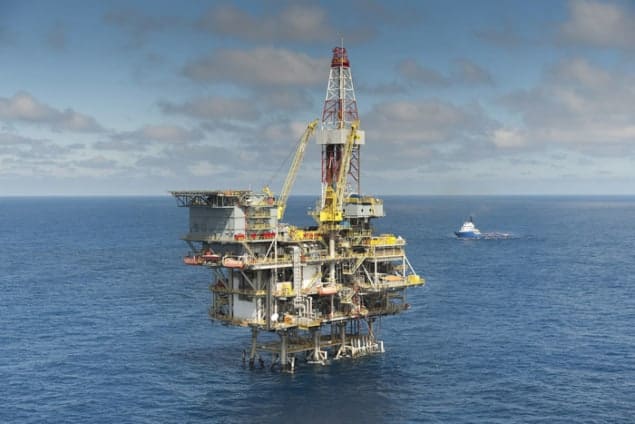
Researchers in Europe have developed a new device for monitoring the quality of water using a tool derived from fundamental physics known as a quantum cascade laser. The portable device has been built by the Austrian company QuantaRed together with another firm called Eralytics, which produces such instruments to monitor petrochemical products. QuantaRed was spun off from the Vienna University of Technology in 1999 and now produces sensor technology for analysis of liquid or gaseous media based on the specific properties of quantum cascade lasers.
Electronic waterfall
While regular semiconductor lasers are now commonplace, the quantum cascade laser is based on a different fundamental principle. First demonstrated in 1994, it uses only one type of charge carrier – electrons – rather than the recombination of electron–hole pairs and operates a bit like an electronic waterfall. Electrons cascade down a stack of identical energy steps built into the laser material during crystal growth, emitting a photon at each step. In contrast, diode lasers only emit one photon over a similar cycle.
Another useful feature of the quantum cascade laser is that it can be designed to emit at any wavelength of radiation over an extremely wide range using the same combination of materials in the active region. If tuned to the mid-infrared range, a quantum cascade laser can be embedded in miniaturized chemical analysers and be ideal for monitoring hydrocarbons.
Monitoring the field
Detecting the presence and quantities of hydrocarbons is vital in the oil industry, where the quality of waste water must be closely monitored. Conventional methods generally involved in on-site monitoring activities rely on chlorofluorocarbon (CFC) organic solvents – the drawback being that these damage the environment. Moreover, CFC-free measurements – such as gas chromatography – need to be performed on land, with the analyses carried out by experts. In some cases this involves transporting water samples over long distances, which can cause the samples to be contaminated.
QuantaRed say that it has spent five years developing the new instrument – the “ERACHECK” – which they say provides fast, accurate results of measurements of hydrocarbons in waste water from oil platforms, rigs and refineries out at sea, without the use of the ozone-depleting CFCs.
Weighing 8 kg, the ERACHECK is built specifically to be portable and rugged so that it can be transported to off-shore sites and be operated by staff on-site using an easy-to-use touchscreen. QuantaRed guarantees a fast response, with a measuring time of 2 min and an accuracy better than 1 ppm. It also has a chargeable battery for use in the field.
Out at sea
QuantaRed recently sold its first ERACHECK device to the well-known Norwegian oil-company Statoil. “After six months of detailed testing, Statoil has declared that the ERACHECK fully meets its high expectations. All tests were passed convincingly. We were pleased to receive the order to equip Statoil’s first offshore platform with our instrument,” says Wolfgang Ritter, chief executive officer of QuantaRed.
Brian McCarry, an environmental toxicologist at McMaster University in Canada, thinks that the ERACHECK may prove to be very useful. While he says that he cannot gauge the accuracy of fine measurement that it may provide, he points out that “the people who need this sort of measurement do not need great accuracy of measurement, rather they need a good, ‘ball park’ estimate of hydrocarbon levels”. He says that while the gas-chronology method will always be the gold standard, the ERACHECK could be used to screen large numbers of samples, and in that sense it fills an interesting niche in the market.



